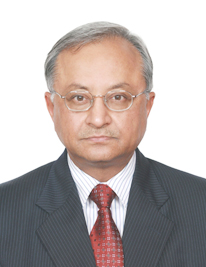The proposal to construct a railroad from Termez in Uzbekistan to Mzaar-e-Sharif and Kabul in Afghanistan and onwards to Peshawar in Pakistan has been on the drawing boards since 2007. Instability in Afghanistan, lack of political will in Uzbekistan and absence of credible sources of financing had stymied any tangible progress.
After coming to power in 2016, Uzbek President Shavkat Mirziayev has ushered a new economic policy focussed on increasing trade and connectivity with all its neighbours including with Afghanistan. President Mirziayev had hosted an important international conference in Tashkent on 15-16 July 2021 on ‘Regional Connectivity between Central Asia and South Asia-Challenges and Opportunities”. At the Conference, the then Prime Minister Imran Khan and President Ashraf Ghani had enthusiastically endorsed the railroad proposal. The United States, Afghanistan, Pakistan and Uzbekistan had also agreed, in principle, to establish a new quadrilateral diplomatic forum for enhancing regional connectivity.
Since the takeover of Afghanistan by Taliban in August 2021, Uzbekistan has taken a pragmatic and practical approach of economic cooperation with the Islamic Emirate of Afghanistan (IEA). Uzbek Ambassador has continued to stay in Kabul without a formal diplomatic recognition of the Taliban regime.
Since 2021, the Central Asian Republics (CARs) have steadily increased their bilateral interactions well as economic and commercial engagement with the IEA. Uzbek-Afghan trade was approximately $ 900 million in 2023 and is expected to rise to $1.5 billion in 2025. Kazakhstan has de-listed the Taliban from the list of banned entities.
Tajikistan continues to supply about 1.6 billion KWH of electricity annually to Afghanistan.
International acceptance of the IEA has also been increasing without any country, except China, formally recognizing the Taliban regime. The United Nations led ‘Doha Meeting on Afghanistan’ in its third session on 30 June and 1 July 2024 had, for the first time a delegation from IEA in addition to representatives from 25 countries. IEA had not attended Doha -1 and 2 as it did not want any human rights or women related issues to be on the agenda. In Doha-3, these issues were not included in the agenda and Taliban regime’s redlines were conceded.
After the relative stabilization of the IEA regime in Kabul, Uzbekistan has revived the proposal for the UAP railroad. In May 2023, a Project Coordination Office was opened in Tashkent with the mandate to work with the three countries to develop feasibility study and to accelerate construction.
Uzbek officials estimate that this new 760 km long railway would reduce freight cost from Uzbekistan to Pakistan by 30-40% and the projected freight volume could be 15 million tonnes by 2030. It would, of course, provide a cheaper and faster land route to the double landlocked Uzbekistan.
In March 2024, the Uzbek government has released a report proposing Qatar’s financial support for the ‘UAP Railway Construction Project’. (https://www.unescap.org/sites/default/d8files/event-documents/Apr30-15_Uzbekistan.pdf )
The estimated cost of the project is about $7 billion and the time for completion is 6-7 years. The construction in hostile terrain would be challenging with 134.6 km long tunnels, 24 km of bridges and 32 km of overpasses. The business model foresees Qatar as a key investor in a consortium with 15% capital and 85% debt. The projected payback period of less than 10 years is rather optimistic.
To sweeten the deal, the Consortium would get the rights to develop mineral resources along the route without a tender for which negotiations are underway with Afghanistan.
Work has already commenced in February 2024 to upgrade the existing 75 km rail line between Termez and Mzaar-e-Sharif at the cost of $6.3 million.
Other mega connectivity projects are also witnessing new energy. On 6 June 2024, the Presidents of China, Uzbekistan and Kyrgyzstan endorsed a trilateral agreement to finance and commence construction of the China-Kyrgyzstan-Uzbekistan (CKU) railway. Reportedly, China has agreed to meet more than half of the project cost. As per a MOU signed in May 2023, the route would run through Kashgar and the Torugart pass in Western China to Jalalabad in Kyrgyzstan and end at Andijan in Uzbekistan. The CKU project was first conceived in 1997 but was stalled due to lack of funding. For China, this route will provide an alternative if there are any future impediments in the operation of the present route via Kazakhstan and Russia for its exports to Europe.
Afghanistan is also looking in all directions to boost rail-road connectivity. In May 2023, it had announced that Afghanistan will join the China-Pakistan Economic Corridor. Afghanistan is also pursuing a 200-km rail link connecting Herat in the North-West with Iran which would provide access to the sea. To add to the proliferation of connectivity proposals, in July 2024, Taliban representatives met with officials of Kazakhstan and Turkmenistan to discuss the construction of a new railway line from Turkmenistan through Afghanistan to Pakistan.
At Doha-3, the IEA representative Zabihullah Mujahid had reportedly reiterated Kabul’s commitment to the ‘International North-South Transport Corridor’(INSTC) to which India is heavily committed. He said that the Afghan foreign policy was ‘economically oriented’. As per Afghan sources both JP Singh, JS(IPA) representing India at Doha-3 and Zamir Kabulov, Russian Presidential Envoy for Afghanistan had ‘expressed support’ for the Taliban’s position.
India needs to carefully watch the progress in the implementation of various connectivity projects connecting Central Asia and South Asia.
Based on the experience of CPEC, it would appear that none of the proposed projects are economically viable in the short or medium term. Along with our partners, we need to aggressively work to boost the utilization of the INSTC as much of the infrastructure is already in place.
(The paper is the author’s individual scholastic articulation. The author certifies that the article/paper is original in content, unpublished and it has not been submitted for publication/web upload elsewhere, and that the facts and figures quoted are duly referenced, as needed, and are believed to be correct). (The paper does not necessarily represent the organisational stance... More >>
Image Source: https://imagevars.gulfnews.com/2018/6/19/1_16a084d2a25.2239310_1449248050_16a084d2a25_large.jpg











Post new comment